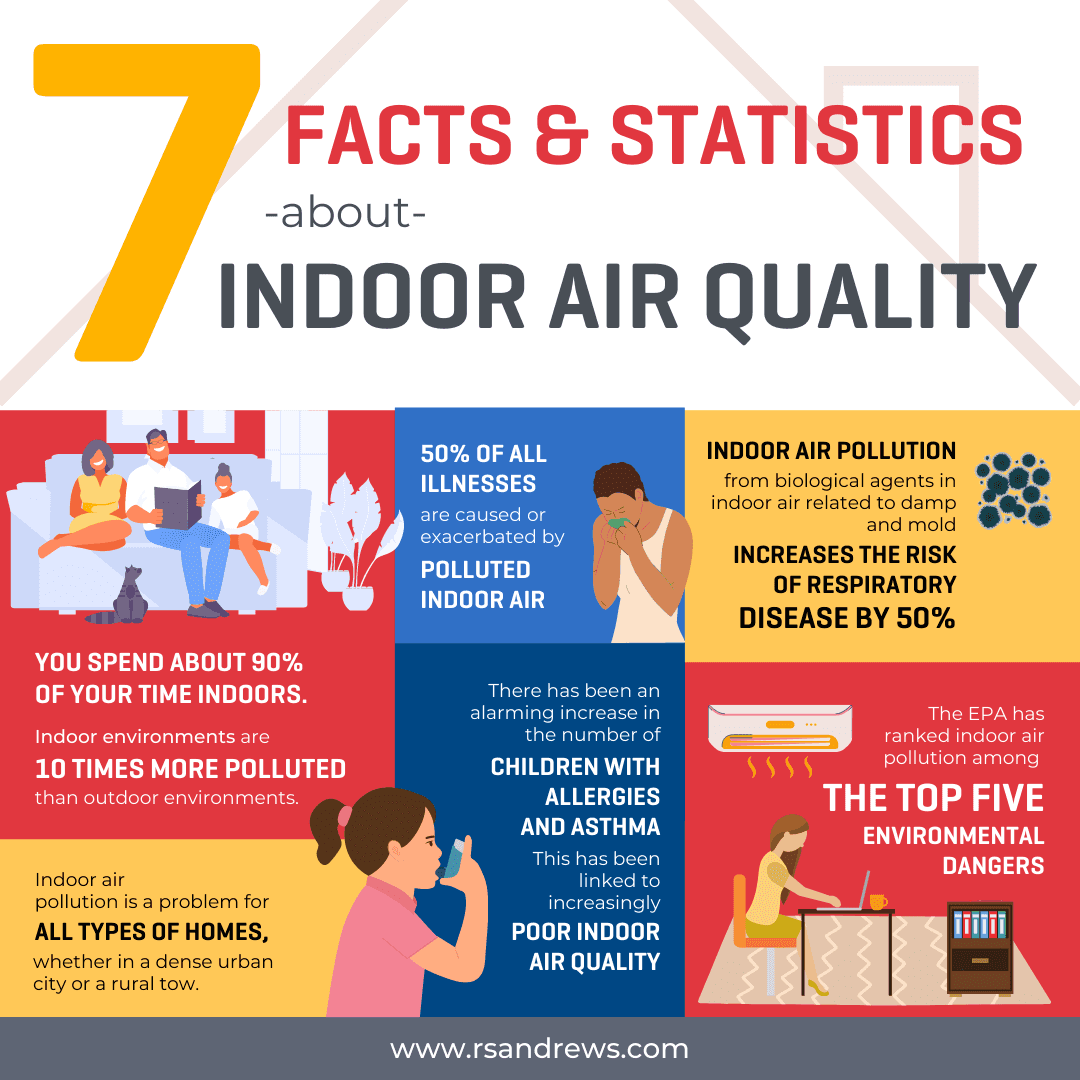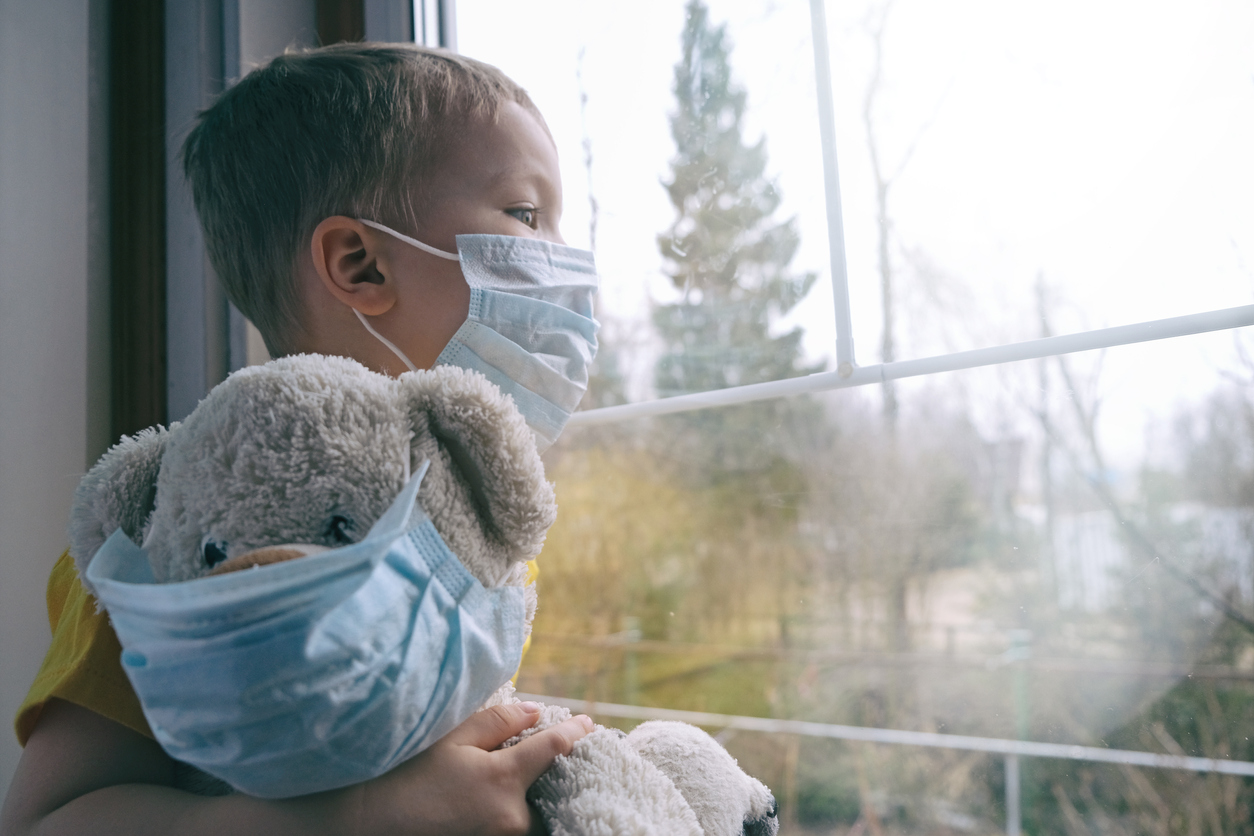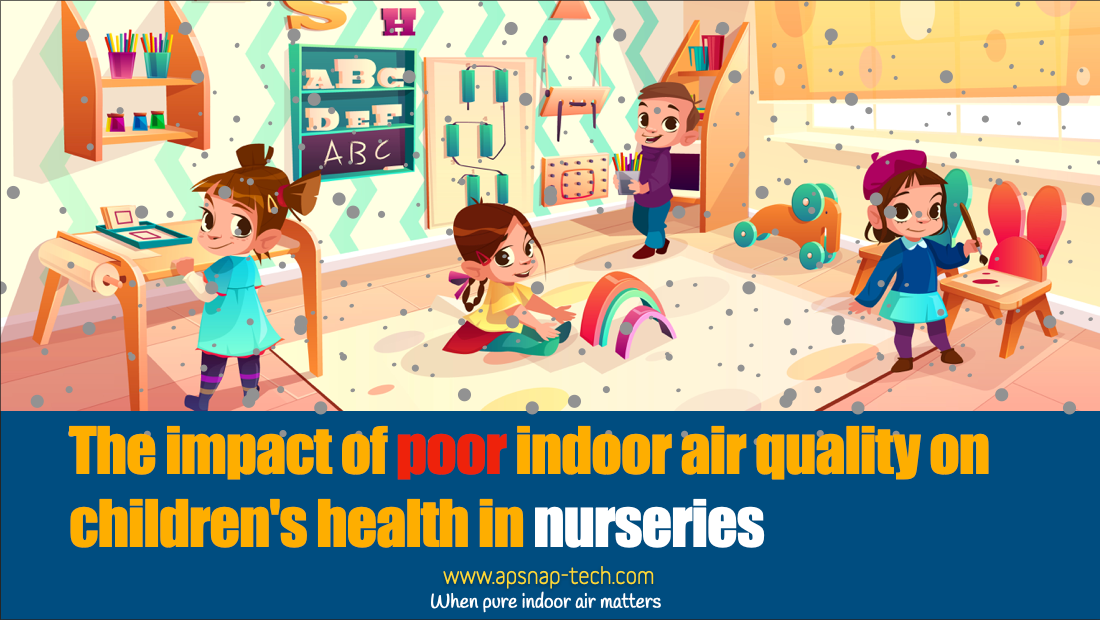Poor indoor air quality can harm children’s health. It affects their growth, learning, and overall wellbeing.
Children spend most of their time indoors, making air quality crucial. Pollutants like dust, mold, and chemicals can linger inside homes and schools. Kids are more vulnerable to these pollutants due to their developing immune systems and higher breathing rates.
Poor air quality can lead to asthma, allergies, and even cognitive issues. Understanding the risks and taking steps to improve indoor air quality is essential for protecting our children’s health. This blog will explore the ways poor indoor air quality affects children and provide tips to create a healthier environment for them.
Common Indoor Air Pollutants
Poor indoor air quality can affect children’s health. Understanding common indoor air pollutants helps protect them. These pollutants often linger unnoticed in our homes. Let’s dive into some of the most common offenders.
Dust And Allergens
Dust is more than just a nuisance. It can harbor allergens like pollen, pet dander, and dust mites. These particles can trigger allergies and asthma in children. Dust can settle on surfaces and accumulate over time. Regular cleaning can help reduce dust levels. Vacuuming carpets and washing bedding frequently is crucial.
Chemical Contaminants
Household products often contain chemical contaminants. These include cleaning supplies, paints, and pesticides. Volatile organic compounds (VOCs) are common chemicals found in many household items. These can evaporate into the air and be inhaled by children. VOCs can cause headaches, dizziness, and respiratory problems. Keep your home well-ventilated and use eco-friendly products to reduce exposure.
Mold And Mildew
Mold and mildew thrive in damp environments. Bathrooms, basements, and kitchens are common breeding grounds. Mold releases spores that can cause respiratory issues. Children with asthma are particularly vulnerable. Prevent mold growth by controlling humidity levels. Use dehumidifiers and fix leaks promptly. Clean mold-affected areas with appropriate solutions.
Sources Of Indoor Air Pollution
Poor indoor air quality can harm children’s health. Various sources inside our homes contribute to this issue. Understanding these sources helps in taking proper measures to improve air quality. Let’s explore the primary sources of indoor air pollution.
Household Products
Many household products release harmful chemicals into the air. Cleaning agents, air fresheners, and paints are common culprits. These products emit volatile organic compounds (VOCs). VOCs can irritate a child’s lungs and cause allergies. Choose products labeled as low-VOC or VOC-free to reduce exposure.
Building Materials
Building materials can also release pollutants. New carpets, flooring, and furniture often emit formaldehyde. This chemical can trigger asthma and other respiratory issues. Older homes may contain asbestos and lead-based paint. Both are dangerous, especially to children. Regular maintenance and using safer materials can help.
Outdoor Pollutants
Outdoor pollutants can seep into our homes. Pollen, dust, and vehicle emissions are common examples. These pollutants can worsen indoor air quality. They can enter through windows, doors, and ventilation systems. Keeping windows closed during high pollen seasons helps. Using air purifiers can also reduce indoor pollution levels.
Impact On Respiratory Health
Poor indoor air quality can significantly affect children’s respiratory health. Young lungs are more vulnerable. This leads to various respiratory issues, which can impact a child’s overall well-being and daily activities.
Asthma And Allergies
Children exposed to pollutants are at higher risk of developing asthma. Dust mites, mold, and pet dander can trigger asthma attacks. These elements also cause severe allergies. Symptoms include sneezing, coughing, and difficulty breathing. Contaminants like smoke and chemicals worsen the condition. Keeping the indoor environment clean is crucial. Use air purifiers and maintain proper ventilation to reduce allergens.
Chronic Respiratory Issues
Continuous exposure to poor indoor air quality can lead to chronic respiratory problems. Children may develop bronchitis or other long-term lung diseases. Symptoms of chronic respiratory issues include persistent cough and wheezing. These conditions can impact school performance and physical activities. Limiting exposure to pollutants helps prevent these issues. Regularly changing air filters and using non-toxic cleaning products are effective measures.

Credit: cen.acs.org
Effect On Cognitive Development
Poor indoor air quality can hinder children’s cognitive development. Exposure to pollutants may lead to memory and attention problems. Good air quality is crucial for healthy brain growth.
Poor indoor air quality can have a significant impact on children’s cognitive development. Children need clean air to grow and learn properly. Contaminated air can hinder their brain functions. This can lead to various cognitive issues. Let’s explore some specific effects.Learning Difficulties
Children exposed to polluted air might face learning difficulties. Pollutants can affect their concentration and memory. These children may struggle to focus during lessons. They may also find it hard to retain information. This can lead to lower academic performance. Teachers might notice a decline in their classroom engagement.Behavioral Issues
Behavioral problems are another consequence of poor air quality. Children might become irritable or hyperactive. These changes can disrupt their daily routines. Parents and teachers might see increased temper tantrums. Children could also show signs of anxiety or depression. These behavioral changes can impact their social interactions. Addressing air quality can improve their overall well-being. “`Physical Health Consequences
Poor indoor air quality can harm children’s physical health. It may lead to respiratory issues, allergies, and asthma. Long-term exposure can affect their growth and cognitive development.
Poor indoor air quality can have serious effects on children’s health. These effects can impact their physical well-being in many ways. Children are more vulnerable to air pollutants. Their bodies are still growing, and their immune systems are not fully developed. Let’s explore some specific health consequences.Immune System Weakness
When children breathe polluted air, their immune systems can weaken. Pollutants can cause inflammation and stress in their bodies. This makes it harder for them to fight off infections. They may get sick more often. Common illnesses include colds, flu, and respiratory infections. Their overall health can suffer, and recovery times can be longer.Sleep Disturbances
Poor indoor air quality can also disrupt children’s sleep. Pollutants can irritate their airways. This can lead to coughing and sneezing at night. Allergens can cause nasal congestion, making it hard to breathe. Poor sleep affects their energy levels and mood. They may have trouble concentrating in school. Over time, lack of sleep can affect their growth and development. “`Prevention And Mitigation Strategies
Poor indoor air quality can harm children’s health. It can lead to asthma, allergies, and other respiratory issues. Ensuring clean air at home is crucial. Let’s explore some prevention and mitigation strategies.
Improving Ventilation
Good ventilation helps reduce indoor pollutants. Open windows and doors to let fresh air in. Use exhaust fans in kitchens and bathrooms. This removes odors and moisture. Consider installing a whole-house ventilation system. It ensures consistent airflow throughout the home.
Using Air Purifiers
Air purifiers can remove airborne particles. Choose ones with HEPA filters. They trap dust, pollen, and other allergens. Place purifiers in children’s bedrooms and play areas. This ensures they breathe cleaner air. Regularly change filters for optimal performance.
Regular Cleaning
Regular cleaning reduces dust and allergens. Vacuum carpets and rugs often. Use a vacuum with a HEPA filter. Dust surfaces with a damp cloth. Wash bedding and stuffed toys weekly in hot water. Keep pets out of children’s rooms. This minimizes exposure to pet dander.
Role Of Parents And Caregivers
Parents and caregivers play a critical role in protecting children from poor indoor air quality. Youngsters are more vulnerable to pollutants due to their developing bodies. By taking proactive steps, parents can ensure a healthier living environment for their children.
Monitoring Air Quality
Regular monitoring of indoor air quality is essential. Parents can use air quality monitors to detect harmful pollutants. These devices measure levels of dust, pollen, and other allergens. Keeping an eye on air quality helps in taking timely actions.
Simple measures like keeping windows open can improve ventilation. Use exhaust fans in kitchens and bathrooms to reduce humidity. Replacing air filters in HVAC systems regularly also helps.
Another effective way is to use indoor plants. Plants like spider plants and peace lilies can improve air quality. They absorb harmful chemicals and release oxygen.
Educating Children
Teaching children about air quality is important. Explain to them why clean air matters for their health. Make them understand the sources of indoor pollution.
Encourage children to participate in keeping their environment clean. Teach them to avoid burning candles or incense indoors. Instruct them not to smoke or allow smoking in the house.
Use simple language and examples. For instance, explain how dust can affect their breathing. Use visuals and stories to make the learning process engaging.
Advocating For Cleaner Spaces
Parents should advocate for cleaner spaces at home and school. Ensure that your child’s school maintains good air quality standards. Talk to school authorities about air filtration and ventilation systems.
Create a clean and healthy environment at home. Use eco-friendly cleaning products that do not emit harmful chemicals. Avoid using pesticides and harsh chemicals indoors.
Parents can also support community efforts for cleaner air. Join local groups that focus on reducing air pollution. Participate in campaigns that promote the use of clean energy sources.

Credit: www.rsandrews.com

Credit: www.drmayankshukla.com
Frequently Asked Questions
How Does Indoor Air Quality Affect Children?
Poor indoor air quality can lead to respiratory issues, allergies, and asthma in children. It can also impact their cognitive development and overall well-being. Ensuring clean air at home is vital for their health.
What Are Common Pollutants In Indoor Air?
Common indoor air pollutants include dust mites, pet dander, mold, and tobacco smoke. Volatile organic compounds (VOCs) from household products can also contribute to poor air quality.
Can Poor Indoor Air Cause Asthma In Children?
Yes, poor indoor air quality can trigger asthma symptoms or worsen existing asthma in children. Exposure to allergens and pollutants can lead to frequent asthma attacks.
How Can We Improve Indoor Air Quality?
To improve indoor air quality, use air purifiers, maintain proper ventilation, and regularly clean your home. Avoid using products with harsh chemicals and keep humidity levels in check.
Conclusion
Poor indoor air quality significantly affects children’s health. Respiratory issues, allergies, and asthma can worsen. Cognitive development may also suffer. It is crucial to ensure clean indoor air. Simple steps can make a big difference. Use air purifiers and maintain proper ventilation.
Regularly clean and dust your home. Healthy air means healthier children. Prioritize their well-being today.
Rakib Sarwar is a Registered Pharmacist and a reputed health and wellness blogger. He has a great interest in Air purifiers.
